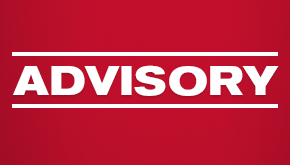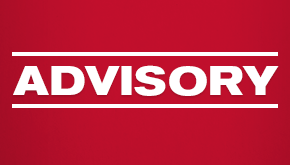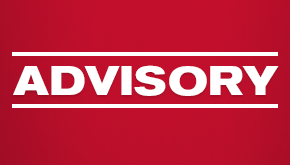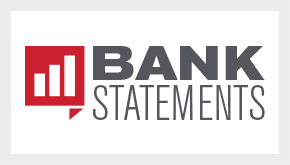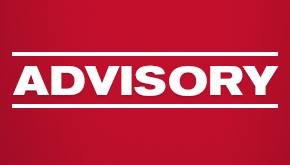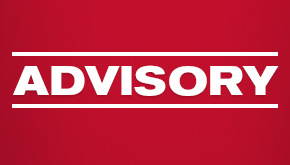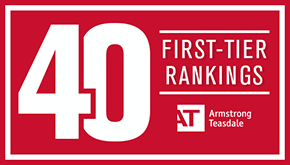Proposed Reporting Requirements for Large U.K. Companies
On 16 October 2023, the UK government has withdrawn the Draft Regulations after consultation with companies raised concerns about imposing additional reporting requirements. Instead, the UK government said that it would pursue options to reduce the burden of red tape to ensure the UK is one of the best places in the world to do business. See details at: Burdensome legislation withdrawn in latest move to cut red tape for businesses - GOV.UK (www.gov.uk).
On 19 July 2023, the U.K. Department for Business & Trade published the draft Companies (Strategic Report and Directors’ Report) (Amendment) Regulations 2023 (Draft Regulations), together with an explanatory memorandum. The Draft Regulations have been laid before Parliament and will be debated there in due course. If approved, the Draft Regulations will amend Part 15 of the Companies Act 2006 (Companies Act) to introduce new corporate reporting obligations on certain large U.K.-incorporated companies. The Draft Regulations form part of a broader package of measures that are aimed at implementing the proposals outlined by the government in its white paper on audit and corporate governance reform.
The Draft Regulations, if adopted, will apply to large companies incorporated in the U.K., whether they are listed or traded on a multilateral trading facility such as AIM or private, but will not apply to LLPs.
In-Scope Companies and Timing of Implementation
The Draft Regulations, if approved, will apply to all U.K.-incorporated companies (and groups – see below) with a “high level of employees and turnover”, that is, with both 750 or more U.K. employees and an annual turnover of at least £750 million.
The Draft Regulations are expected to come into force in two stages: (1) companies with equity share capital admitted to trading on a U.K.-regulated market will need to comply from financial years starting on or after 1 January 2025; and (2) one year thereafter, for financial years starting on or after 1 January 2026, other companies that meet the above threshold (e.g., very large private companies, non-traded public companies and companies with shares admitted to trading on a multilateral trading facility such as AIM) will also need to comply. It is expected that The Financial Reporting Council (FRC) will publish its guidance on the new reporting requirements before the Draft Regulations come into force, to help companies comply.
Group Reporting
The Draft Regulations contain certain specific treatment with respect to reporting in a group context. In the case of a group headed by a U.K. parent company that prepares consolidated group accounts under the Companies Act, the dual threshold will be assessed on an aggregated groupwide basis. If the group in aggregate has 750 or more employees and an annual turnover of £750 million or more, then the U.K. parent will make the required reporting under the Draft Regulations on behalf of the group, and no U.K. subsidiary will be required to report individually under the Draft Regulations (regardless of whether that U.K. subsidiary meets the dual threshold or not).
In the case of a group of U.K. subsidiaries which satisfies the dual threshold, but does not have a U.K. parent that publishes consolidated accounts (because the group is headed by a foreign parent and relies on the consolidated accounts of that foreign parent, for example), then group reporting will not apply and each U.K. subsidiary within the group that satisfies the dual threshold in its own right will be required to report individually under the Draft Regulations.
Where group reporting applies, the required disclosures will appear in the U.K. parent's group strategic report or group directors' report (as applicable). As set out below, when it comes to reporting on distributable profits in a group context, only the U.K. parent is required to disclose its distributable profits, and it is not required to disclose the distributable profits of the subsidiaries within the group (whether individually or in aggregate). However, the distribution policy statement will need to provide information about the distribution policy of the group as a whole.
New Reporting Requirements Introduced by the Draft Regulations
If approved by Parliament in their current draft form, the Draft Regulations will create the following new corporate reporting requirements for the applicable companies.
Resilience Statement
Companies will be required to include a new statutory resilience statement in their strategic report, which should summarise the company’s strategic approach to managing risk and building or maintaining resilience over the short, medium and long term, including by:
- describing the principal risks that the directors consider could provide a threat to the company’s operational or financial resilience over the short to medium term, and explaining how such risks are being managed;
- summarising why the directors have decided to adopt the going concern basis of accounting, including any significant judgments or mitigating action taken to reach this conclusion;
- providing a directors’ assessment of the company’s prospects over the medium term (with this period to be defined and explained by the company), including consideration of the likelihood that the company will be able to continue in operation and meet its liabilities as they fall due over that period;
- reporting on an annual “reverse stress test”, which identifies a combination of adverse circumstances that could cause the company’s business plan to become unviable and identifies any mitigating action put in place in light of the test analysis; and
- summarising any long-term trends or factors which could threaten the company’s business model or operations, and any plans the directors may have in place, or be considering, in response.
While the Companies Act currently requires companies to provide “a description of the principal risks and uncertainties facing the company”, the new resilience statement requirement is intended to contain more details, including the likelihood and potential impact of the identified risks and uncertainties, the time period over which they are expected to last, any mitigating actions the company has taken, as well as a company’s underpinning governance processes for risk management and developing business resilience.
Companies will not need to report separately on their “principal risks and uncertainties” if they report on their principal risks in line with the requirements of the resilience statement.
Distributable Profits
Companies will be required to disclose a summary of the changes to their available distributable profits during the financial year, including:
- the distributable profits available at the beginning of the financial year;
- any dividends or other distributions paid in the financial year;
- any purchases of the company’s own shares;
- relevant profits or losses made during the financial year which have added to or reduced the available distributable profits; and
- distributable profits available at the end of the financial year.
If an exact figure of the distributable profits cannot be calculated without unreasonable expense or delay, the Draft Regulations permit a company to disclose a minimum or “no less than” figure instead. The distributable profits figure will be included as a note to the company’s accounts, and therefore will be subject to statutory audit.
The Draft Regulations will also require public companies to disclose the impact of the net assets restriction test on their profits available for distribution.
The Draft Regulations contain an exemption for subsidiaries of companies with a high level of employees and turnover. The effect of this is that, in the case of a U.K. group (headed by a U.K. parent), it is the U.K. parent company only which will be required to disclose its distributable profits.
While the Companies Act contains various rules and restrictions on distributions, U.K. companies have not previously been required to disclose their distributable profits. This new reporting requirement will make such information available to investors and other readers of the accounts.
Distribution Policy Statement
Companies will be required to include an annual distribution policy statement in their directors’ report. This policy statement must explain the company’s policy on the amount and timing of distributions to shareholders over the short and medium term (including dividends and share buybacks) and describe the key risks and constraints to the implementation of that policy. In a group context, the policy statement should comment on the availability of distributable profits not just at the parent company level, but within the wider group.
Material Fraud Statement
Companies will be required to include a material fraud statement in their directors’ report, which will need to include: (i) a summary of the directors’ assessment of the risk of material fraud to the company’s business operations, including how the board has assessed the company’s susceptibility to material fraud and the types of material fraud considered; and (ii) a description of the main measures in place, or proposed, to prevent and detect the occurrence of material fraud. For these purposes, “fraud” means behaviour falling within any of sections 2 to 4 of the Fraud Act 2006 (including fraud by false representation, fraud by failing to disclose information, and fraud by abuse of position), and that fraud is “material” if its nature or magnitude could reasonably be expected to influence the decisions which a reasonable shareholder would make in connection with their shareholding in the company. The definition of “material fraud” covers both fraud perpetrated by the company on external parties and fraud where the company is the victim of the fraud.
Audit and Assurance Policy
Companies will be required to publish an Audit and Assurance Policy (AAP) statement every three years as part of their directors’ report, setting out:
- a description of the company’s internal audit and assurance capabilities;
- its plans for obtaining internal assurance over information in the company’s annual accounts and reports over the next three years (including any voluntary disclosures); and
- an explanation of whether the company plans any external (third-party) assurance of any information in its annual accounts and reports (beyond the annual statutory audit) over the next three years.
In addition, companies will be required to publish an annual update statement, explaining how the AAP has been implemented (and potentially updated) in the year.
While the statutory audit provides reasonable assurance that the financial statements of a company present a true and fair view of the company’s financial position, this new AAP statement requirement is intended to provide assurance around the reliability of nonfinancial information contained in the annual accounts and reports of a company, including on the company’s strategy, governance, risk and matters related to sustainability and climate change, which are areas of increasing interest and importance to investors and wider stakeholders.
Comment
The Draft Regulations, if approved, would require large U.K. companies to comply with a significantly expanded array of disclosures. Although the Draft Regulations are yet to proceed through the parliamentary approval process, and may be subject to change, large U.K. companies meeting the reporting threshold should start to assess the gaps between their existing reporting and the new requirements, and consider what steps need to be taken in order to meet the enhanced requirements.
If you would like to discuss the implications of the proposed legislation, or have any related questions, please contact any of the lawyers in our London Corporate and Securities practice.


